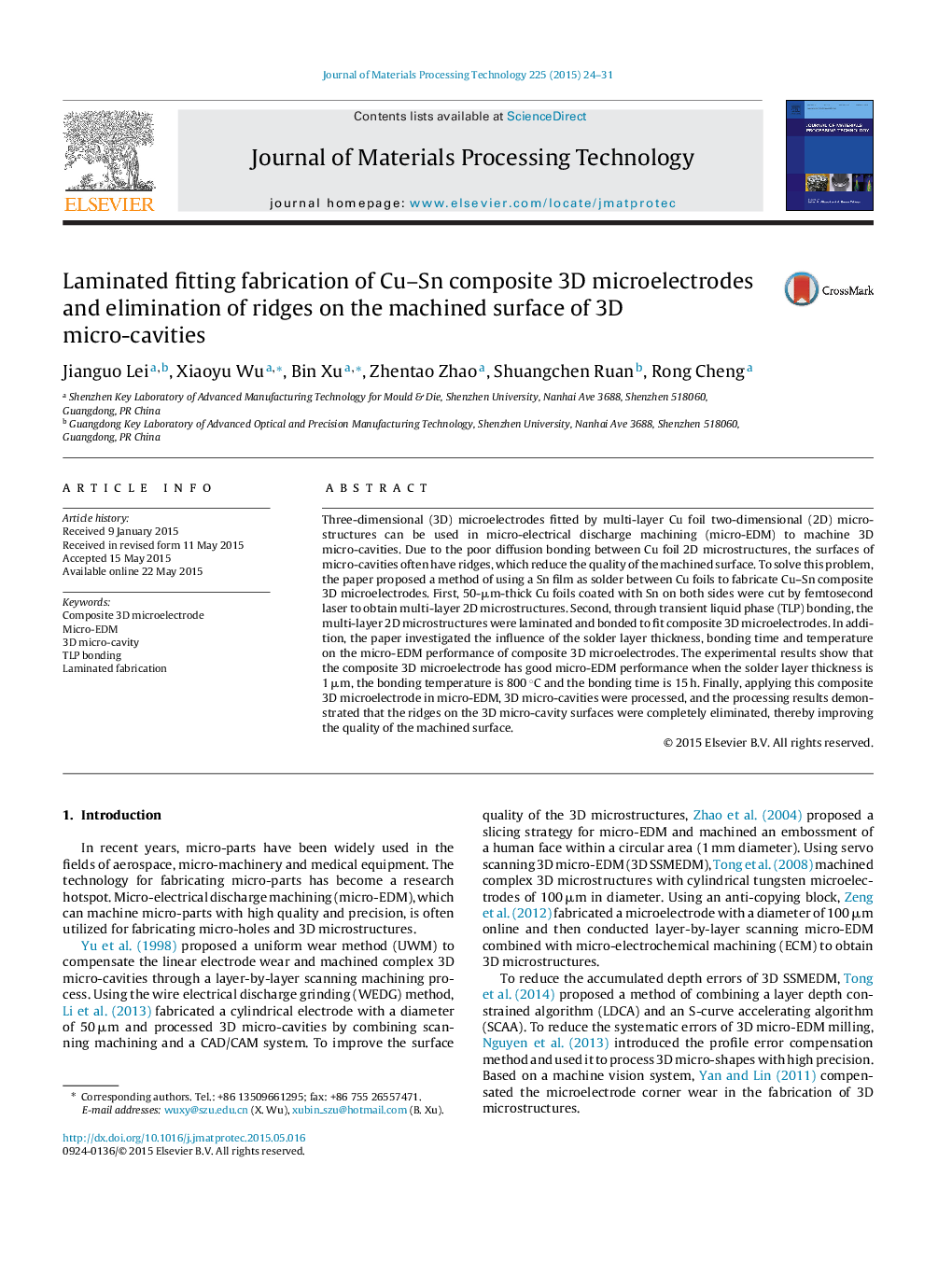| Article ID | Journal | Published Year | Pages | File Type |
|---|---|---|---|---|
| 7176940 | Journal of Materials Processing Technology | 2015 | 8 Pages |
Abstract
Three-dimensional (3D) microelectrodes fitted by multi-layer Cu foil two-dimensional (2D) microstructures can be used in micro-electrical discharge machining (micro-EDM) to machine 3D micro-cavities. Due to the poor diffusion bonding between Cu foil 2D microstructures, the surfaces of micro-cavities often have ridges, which reduce the quality of the machined surface. To solve this problem, the paper proposed a method of using a Sn film as solder between Cu foils to fabricate Cu-Sn composite 3D microelectrodes. First, 50-μm-thick Cu foils coated with Sn on both sides were cut by femtosecond laser to obtain multi-layer 2D microstructures. Second, through transient liquid phase (TLP) bonding, the multi-layer 2D microstructures were laminated and bonded to fit composite 3D microelectrodes. In addition, the paper investigated the influence of the solder layer thickness, bonding time and temperature on the micro-EDM performance of composite 3D microelectrodes. The experimental results show that the composite 3D microelectrode has good micro-EDM performance when the solder layer thickness is 1 μm, the bonding temperature is 800 °C and the bonding time is 15 h. Finally, applying this composite 3D microelectrode in micro-EDM, 3D micro-cavities were processed, and the processing results demonstrated that the ridges on the 3D micro-cavity surfaces were completely eliminated, thereby improving the quality of the machined surface.
Keywords
Related Topics
Physical Sciences and Engineering
Engineering
Industrial and Manufacturing Engineering
Authors
Jianguo Lei, Xiaoyu Wu, Bin Xu, Zhentao Zhao, Shuangchen Ruan, Rong Cheng,
